Sensory Garden Ideas for Elderly: Creating Relaxing Outdoor Spaces
Creating a sensory garden for the elderly can be a delightful and rewarding project. These gardens are designed to engage the senses and provide a tranquil space. They offer a therapeutic experience that can significantly enhance mental and emotional well-being.

As you think about setting up a sensory garden, consider the special needs and preferences of your loved ones. With the right planning, you can create a beautiful and soothing oasis that brings joy and relaxation.
1) Fragrant Herb Garden
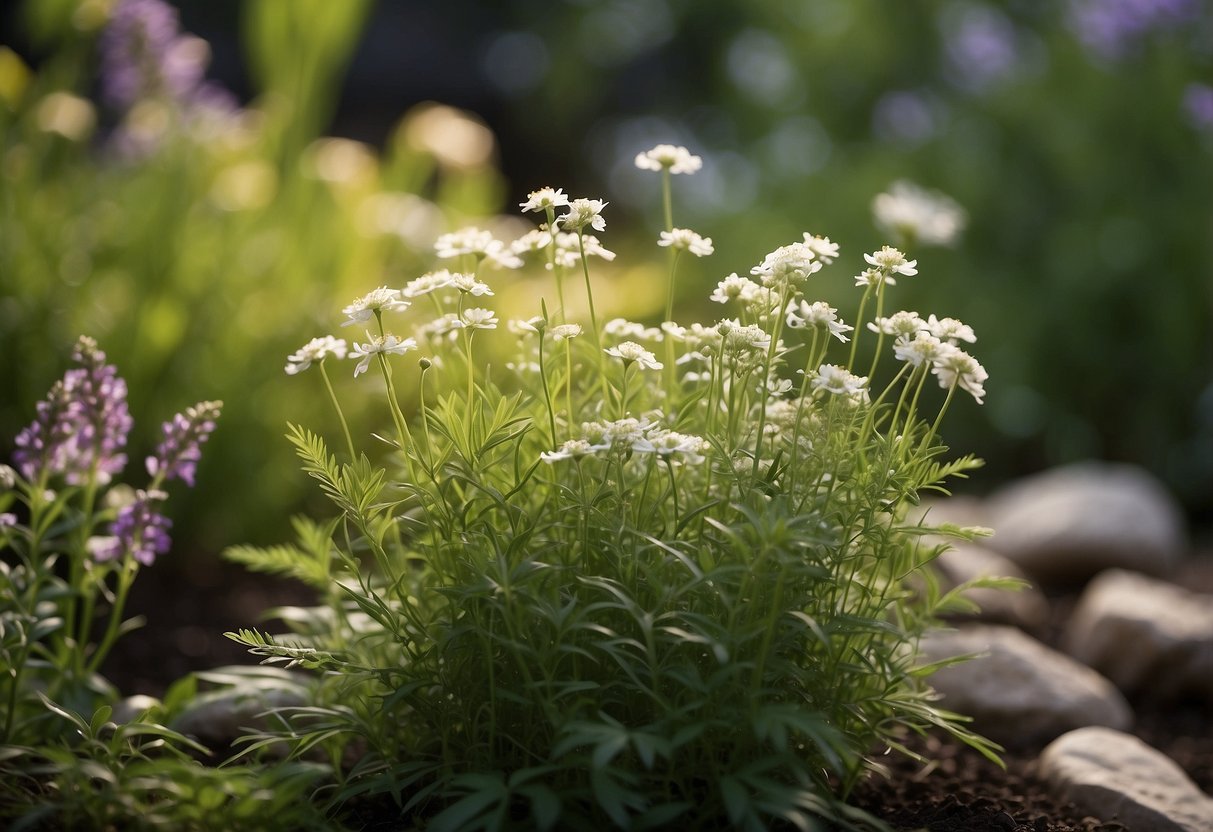
A fragrant herb garden is perfect for stimulating the senses.
Herbs like lavender, mint, and rosemary are great choices. Their lovely scents can evoke memories and promote relaxation.
Planting these herbs is simple. You can use pots or garden beds. Make sure they get plenty of sunlight.
Harvesting herbs is fun and easy, and you can use them in cooking. Fresh herbs add delicious flavors to your meals.
2) Water Fountain Feature
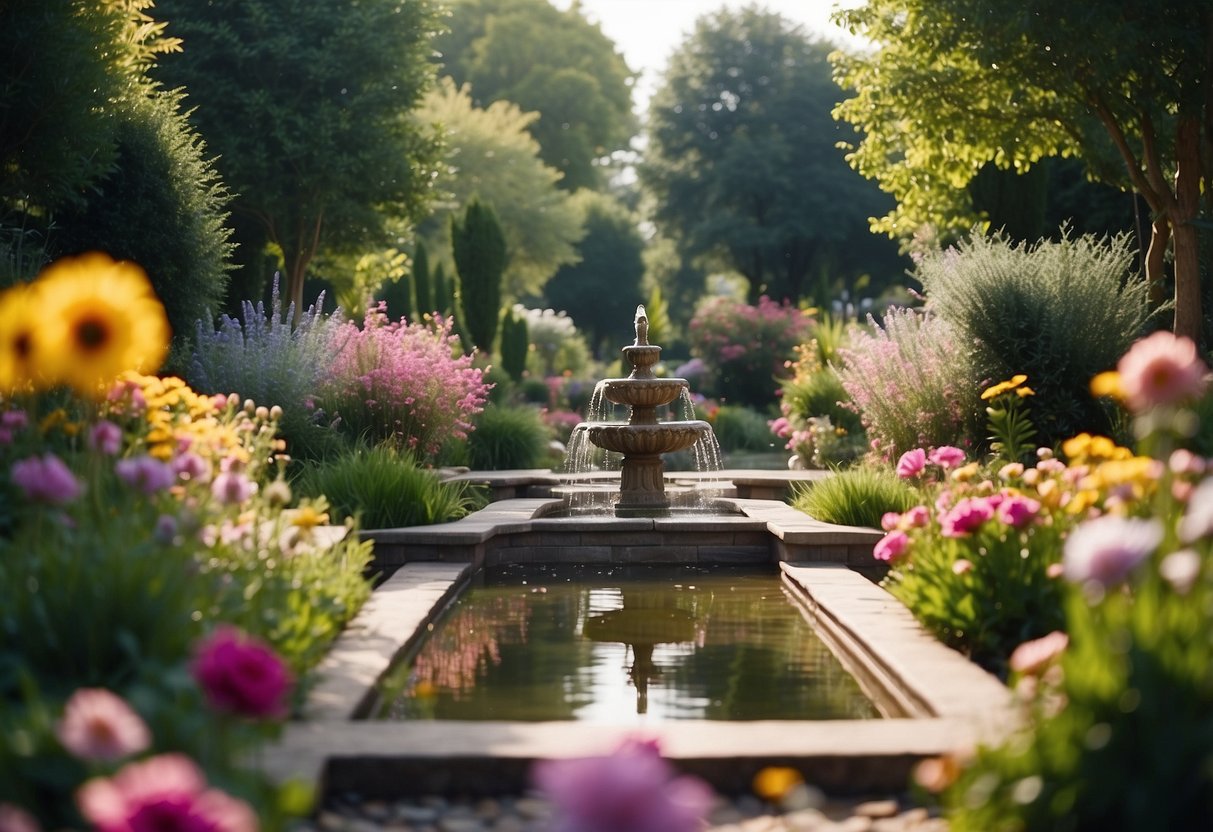
A water fountain can bring peace and beauty to your sensory garden. The calming sound of flowing water helps reduce stress and creates a serene atmosphere.
Choose a small, easy-to-maintain fountain that suits the garden size. It will attract birds and butterflies, adding even more life to your space.
Touching the cool water can be soothing too, stimulating the sense of touch in a gentle way.
3) Tactile Leaf Path
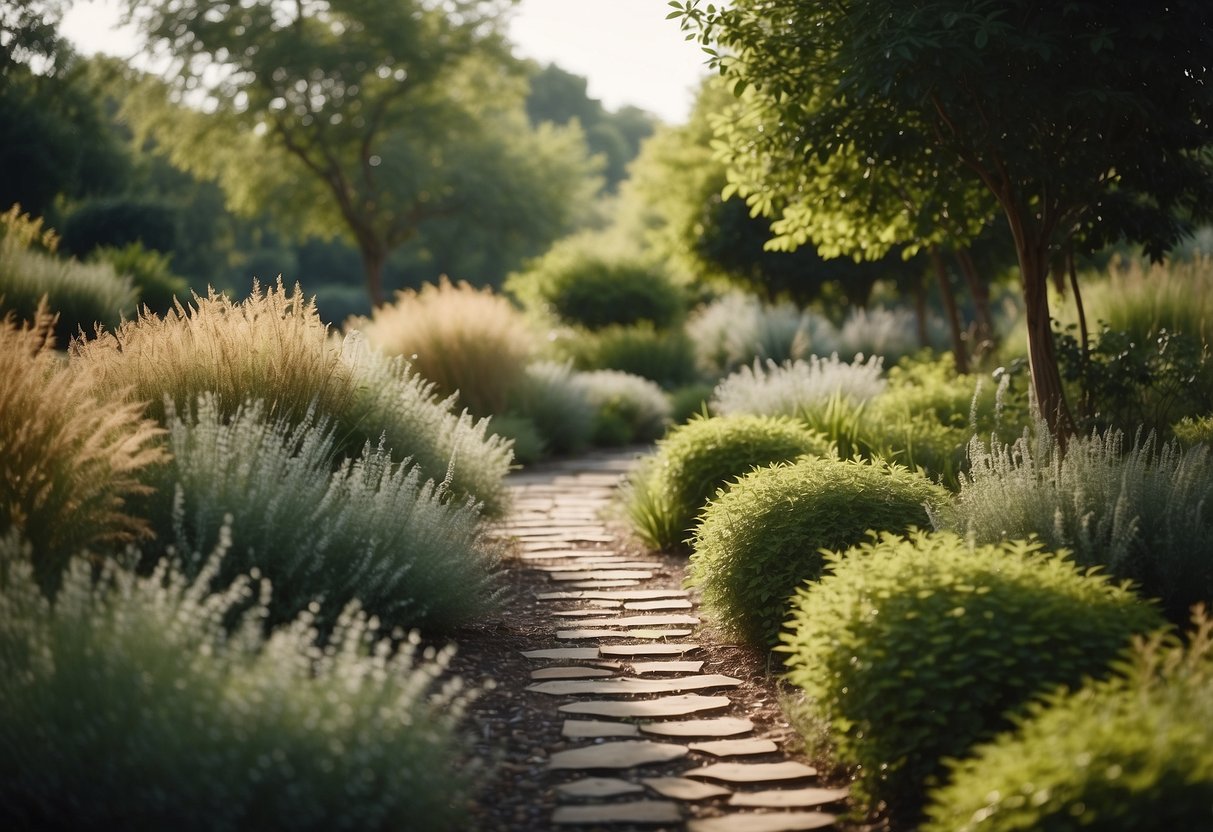
Create a path with a variety of textured leaves for a tactile experience. This allows the elderly to touch and feel different surfaces while walking.
Choose leaves like lamb’s ear, which is soft and velvety. Combine these with rougher or ribbed leaves to provide contrast and engage the sense of touch.
A tactile leaf path can make daily walks more enjoyable and stimulating for seniors.
Colorful Raised Flower Beds
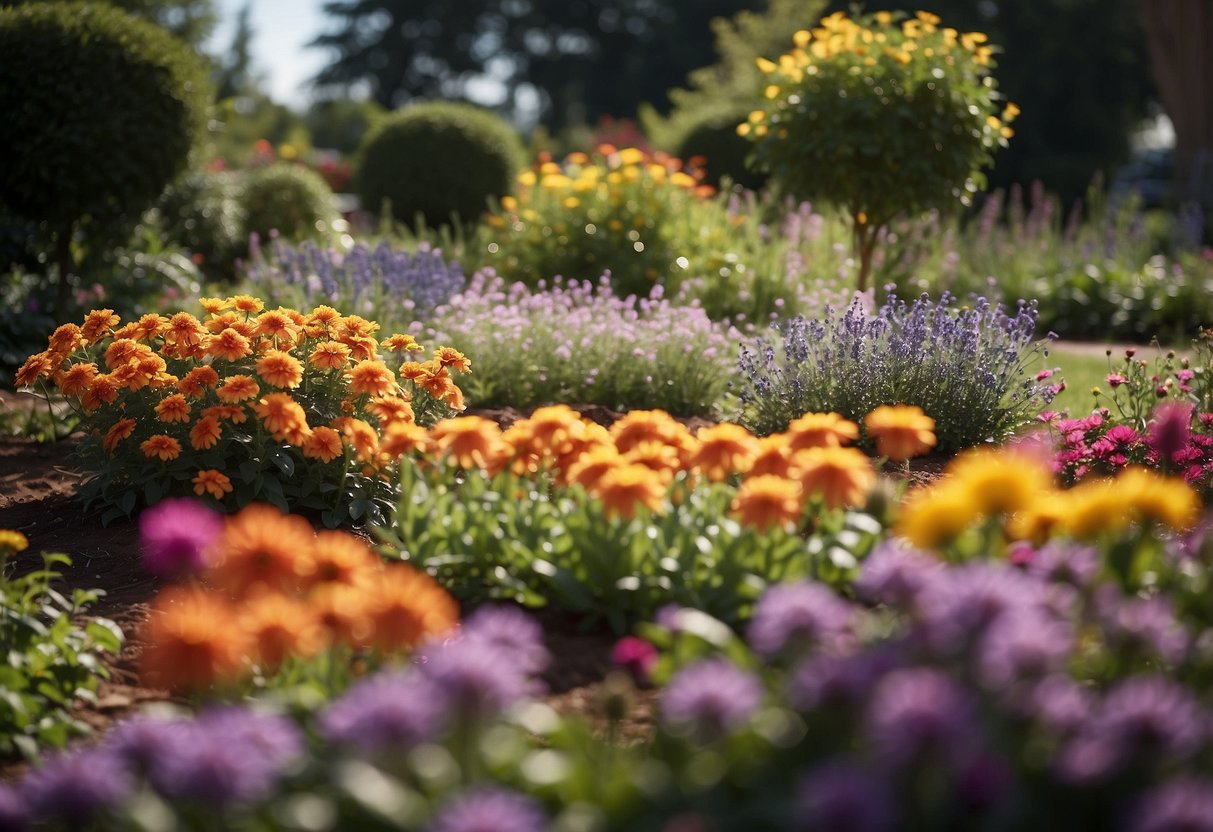
Raised flower beds can bring a splash of color and joy to any garden. They’re perfect for seniors as they provide easier access, reducing the need to bend or kneel.
Try combining bright and cheerful flowers like zinnias and coneflowers. These types of flowers not only look great but also attract butterflies and birds.
Incorporating small shrubs like boxwood can add structure and green hues to the mix. Raised beds make it easy to manage and enjoy the vibrant colors up close.
5) Bird Feeders and Houses

Adding bird feeders and houses to a sensory garden can bring joy and life to the space. Watching birds flit around provides entertainment and can spark memories.
Bird feeders attract birds all year round, making the garden lively. A birdbath near the feeder can also draw birds, adding to the sensory experience.
Choose birdhouses that are easy to clean and maintain. Place them in spots that are visible but safe for birds. This way, you ensure that the garden remains a welcoming and vibrant place for your loved ones.
6) Wind Chimes

Wind chimes are a wonderful addition to a sensory garden for the elderly. They create soothing sounds that can calm the mind.
You can hang them in different spots around the garden to foster an immersive auditory experience. Choose chimes made from various materials like metal, wood, and glass for a variety of pleasant tones.
An assortment of wind chimes will make your sensory garden come alive with gentle, musical sounds. This simple touch can make a big difference in the garden’s atmosphere.
7) Edible Plant Section
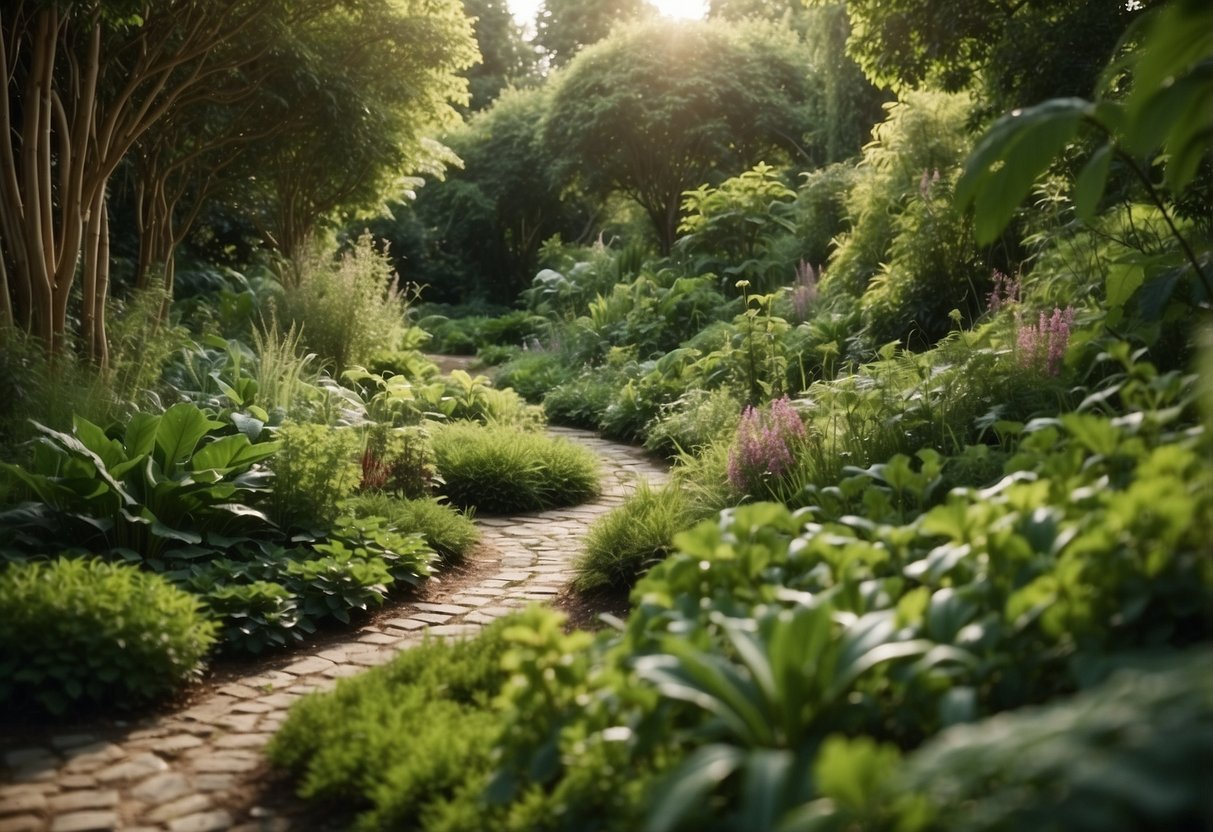
In your sensory garden, consider adding an edible plant section. This can be a fun and tasty way to engage your senses.
You might choose herbs like lavender, thyme, basil, and oregano. These plants not only smell great but are also useful in the kitchen.
Including edible flowers and lettuces can add vibrant colors and flavors to the garden. Chocolate mint can be another exciting choice, as it delights both smell and taste.
With these plants, your sensory garden can be a beautiful and delicious retreat. Learn more about edible plant options at Epic Gardening.
8) Butterfly-Friendly Plants

Butterflies love plants that provide nectar and are rich in color. Planting a diverse range of flowers that bloom at different times can keep butterflies in your garden throughout the growing season.
Lavender is a great choice with its fragrant blooms that attract butterflies.
Coneflowers are another favorite, offering both beauty and a nectar source.
Marigolds are bright and cheerful, drawing butterflies with their vivid hues.
Planting these and other butterfly-friendly plants can create a vibrant, relaxing garden for the elderly to enjoy. For some more ideas, you can visit this link.
9) Scented Pathway Borders

Scented pathway borders are a great way to enhance a sensory garden for the elderly. By planting fragrant flowers and herbs like lavender, rosemary, or jasmine along walkways, you create a pleasant and calming atmosphere.
These plants evoke memories and emotions, making the garden a therapeutic space. The mix of scents can help improve mood and provide a gentle sensory experience.
Consider using tiered planters or raised beds to make the plants easily accessible. This setup allows you to brush against the foliage, releasing their wonderful scents as you walk by.
10) Shaded Seating Areas
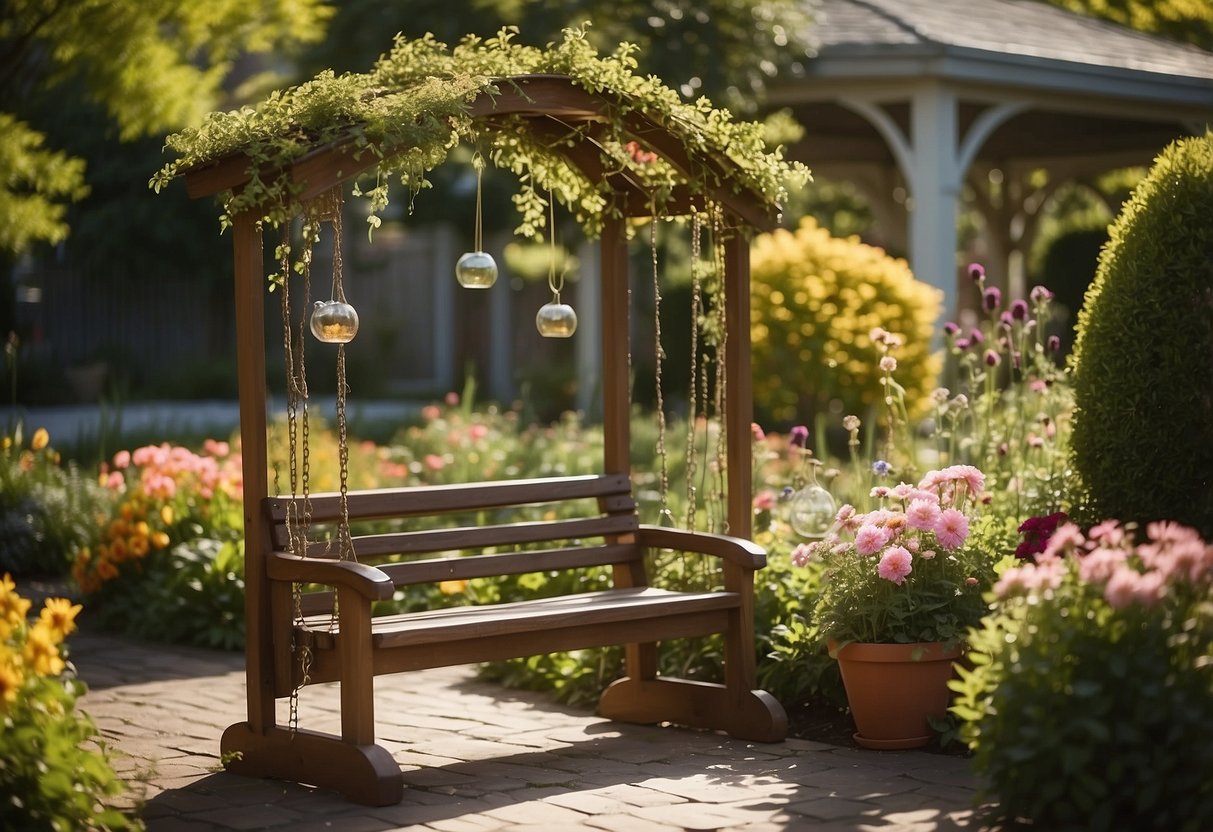
Creating shaded seating areas is important for comfort. You can use trees, pergolas, or umbrellas to provide cool spots in the garden.
Comfortable chairs with armrests can help seniors sit and stand easily. Consider adjustable umbrellas or retractable awnings for flexible shade options.
Shaded areas offer a relaxing place to enjoy the garden, read, or chat with friends.
Benefits of Sensory Gardens for the Elderly

Sensory gardens offer numerous benefits for elderly people, from encouraging physical activity to boosting cognitive function and reducing stress. They help create a peaceful and stimulating environment tailored to the needs and well-being of older adults.
Promoting Physical Activity
Sensory gardens inspire elderly people to move around and engage with their environment. Paths and walkways encourage gentle walking, while raised beds make planting and weeding easier, reducing the need for bending. Gardening tasks like watering plants, tending to flowers, and light pruning are not only enjoyable, but they also help improve mobility, strength, and flexibility.
Gentle Exercise Examples:
- Walking along garden paths
- Light pruning
- Watering plants
By staying physically active, elderly people can maintain better overall health. Simple movements in the garden can significantly enhance their quality of life.
Enhancing Cognitive Function
Sensory gardens are designed with specific elements to stimulate the mind and enhance cognitive function. For individuals with dementia or Alzheimer’s, interaction with various plants and garden features can trigger memories and provide a sense of normalcy. Features like distinct smells, vibrant colors, and various textures engage the senses in a therapeutic way.
Cognitive Benefits:
- Memory stimulation through familiar scents and sights
- Focus and concentration from gardening tasks
- Encouragement of new learning experiences
Creating a sensory-rich environment helps keep the brain engaged, which is particularly beneficial for those facing cognitive challenges.
Reducing Stress and Anxiety
The calming atmosphere of sensory gardens helps reduce stress and anxiety for elderly residents. The soothing sounds of nature, such as rustling leaves and flowing water, provide a peaceful ambiance. Spending time in these tranquil spaces can uplift moods and foster feelings of contentment.
Stress-Relief Features:
- Peaceful garden settings
- Soothing sounds of nature
- Relaxing scents from flowers and herbs
Sensory gardens promote emotional well-being by offering a serene place to unwind and enjoy the beauty of nature. This helps seniors feel more at ease and improves their overall mental health.
By incorporating sensory gardens into living spaces, you can create an enriching environment that supports the physical, cognitive, and emotional well-being of elderly individuals.
Design Principles for Sensory Gardens
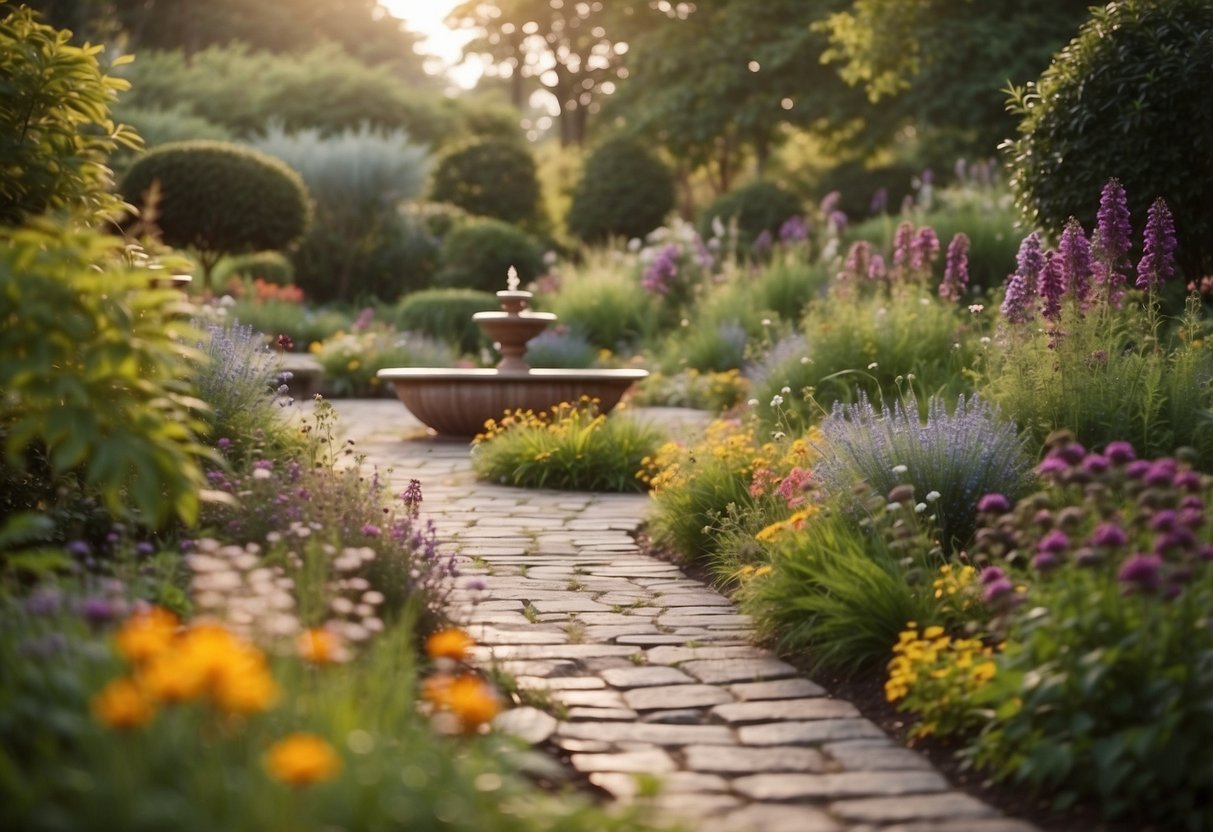
Creating a sensory garden for the elderly involves making the space accessible, incorporating multisensory elements, and ensuring safety. These principles are essential for a garden that is enjoyable and safe for everyone.
Accessibility Considerations
Accessibility is key in a sensory garden for the elderly. Paths should be wide enough for wheelchairs and walkers, at least 36 inches. Smooth, non-slip surfaces can prevent falls. Raised beds or planters bring plants within easy reach. Benches and shaded areas provide resting spots.
Think about visual accessibility too. Clear signage with large, readable fonts can guide visitors. Sensory markers like wind chimes help those with visual impairments navigate the garden. Entryways should be level with no steps or uneven surfaces.
Consider mobility aids and easy-to-grip handrails along pathways. These small adjustments make a huge difference for seniors with differing abilities. Accessibility ensures everyone can enjoy the sensory garden.
Multisensory Elements
Engage all five senses with diverse plants and features. Colorful flowers like marigolds and pansies catch the eye. Plants with different textures, such as lamb’s ear and ornamental grasses, invite touch. Fragrant herbs like lavender and rosemary stimulate the sense of smell.
For taste, consider edible plants. Small fruit trees or herb gardens offer tasty treats. Sound elements like wind chimes or small water features create soothing auditory experiences.
Water elements can also provide a refreshing tactile experience. Diverse textures in paths and seating, such as wood and stone, enhance touch. A well-planned garden stimulates sight, sound, touch, taste, and smell, offering a full sensory experience.
Safety Features
Safety in sensory gardens is crucial. Non-slip surfaces on paths and walkways reduce the risk of falls. Raised beds prevent bending and reduce back strain. Use rounded edges on furniture and planters to avoid injuries.
Good lighting is essential, especially for evening visits. Solar-powered lights are eco-friendly and efficient. Ensure there are no hidden steps or uneven stones that could cause trips.
Handrails along paths provide support. Regular maintenance to remove debris and repair paths keeps the garden safe. Safety features allow seniors to enjoy the garden worry-free, enhancing their overall experience.
Selecting the Right Plants

Creating a sensory garden for the elderly requires choosing plants that stimulate the senses in a gentle and enjoyable way. Focus on plants that offer pleasant scents, interesting textures, and vibrant colors.
Scented Plants
Plants with a pleasant fragrance can have a calming effect. Lavender is a great choice because its aroma helps reduce stress and improve mood. Roses are another excellent option, with many varieties offering beautiful scents. Jasmine provides a sweet aroma that can transport you to a relaxing space. Mint is also a good pick; its fresh scent invigorates without being overpowering. Planting these around seating areas ensures the scents are easily enjoyed.
Tactile Plants
Plants with interesting textures allow for a hands-on experience. Lamb’s ears are soft and velvety, making them perfect for touching. The leaves of sage are also textured and add a different tactile element. Bunny tails are another great choice with their furry, soft touch. Include hens and chicks for their rosettes that invite gentle handling. Placing these plants along pathways encourages interaction and exploration.
Visually Stimulating Plants
Bright and colorful plants make the garden visually appealing. Sunflowers add height and striking colors. Marigolds offer bright oranges and yellows that stand out. Pansies provide a variety of colors and are easy to care for. Coleus has vibrant foliage in diverse patterns and shades. These plants can be grouped together or spread out to create splashes of color throughout the garden.
Utilizing these plant choices will help make the garden a vibrant and stimulating place. The combination of scents, textures, and colors will create a delightful experience for everyone.







